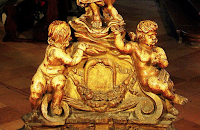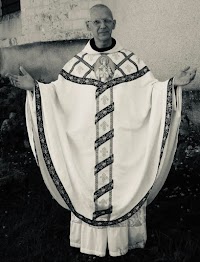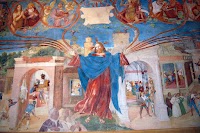 The beautiful Saint Agnes Convent in St. Paul, Minnesota was built under the pastorship of Fr. John Gruden from 1951-1953. Fr. Gruden was an author and educator who put great faith in Catholic education and the immense contribution of resident teaching sisters in a parish …
The beautiful Saint Agnes Convent in St. Paul, Minnesota was built under the pastorship of Fr. John Gruden from 1951-1953. Fr. Gruden was an author and educator who put great faith in Catholic education and the immense contribution of resident teaching sisters in a parish …
Our Advertising Partners
-
The global pandemic has disrupted the normal celebration of the Holy Week in Spain, where, for a second year, the government has forbidden t...
-
To the person who simply enjoys beautiful art and architecture, distinctions like "baroque" or "rococo" might seem overl...
-
We live in a very visual, image-based culture and, what's more, there is always lots of curiosity around the matter of traditional papal...
-
The earliest pictorial representations of the Baptism of the Lord were carved in stone, on Christian sarcophagi. Later, during the long Mid...
-
The mitre is one of the most recognizable symbols of prelates of the Church, specifically of bishops up to the Roman pontiff himself -- thou...
-
In a previous article we considered what the exterior of Old St. Peter's was like and today we will turn our attention to the interio...
Blog Archive
-
▼
2021
(258)
-
▼
November
(22)
- St. Agnes Convent Chapel Renovation by Noble Inter...
- Varieties of Violacea Found in the Sixteenth Century
- Four Altar Candlesticks from the Sixteenth Century
- An Antependium for Good Friday
- Development in Vestment Design: An Example
- The American Transformation of the Advent Wreath
- Symbols in Vestment Design: Some Design Considerat...
- What's in a Painting? A Small Window into the Litu...
- The History and Forms of the Christian Altar: The ...
- Some Historic Churches of Québec
- Vestments of Cardinal Prospero Lorenzo Lambertini ...
- The "Parato Ciceri" - Paraments of Cardinal Carlo ...
- Private Chapel and Vestments of Cardinal Gianfranc...
- A Chasuble for Martinmas (St. Martin's Day)
- Balthasar Permoser's Triumph of the Cross
- Prelatial Dress of the Religious Orders: The Sylve...
- The Traditional Vestments of the Supreme Pontiff a...
- Tradition and Invention: Lorenzo Lotto’s Christ Of...
- Book Notice: Tresors Inconnus du Vatican: Ceremoni...
- American Indian Requiem Masses
- Reclaiming the Catholic Sense and Use of Memento Mori
- Liturgical and Archeological Notes on the Feast of...
-
▼
November
(22)
Donate
Copyright ©
Liturgical Arts Journal | Powered by Blogger






































